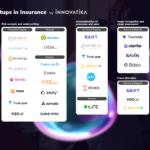
In the vibrant landscape of Fast-Moving Consumer Goods (FMCG), marked by swift product turnover and razor-thin margins, the winners are those who place Consumers at the center of their innovation universe. This demands a strategy, culture, processes and tools that transcends the conventional product-focused model to a product process that focuses on consumer centricity.
The imperative of consumer-centricity and strategy in FMCG
In this Consumer-driven approach, thorough market research of Consumer habits, motivations, and desires is paramount. It gives an opportunity to discover unmet needs of the target segment which can be translated into successful product development. There are many impactful and unconventional consumer research techniques which can be effectively applied. Here are some examples:
Aligning with consumer megatrends
Identifying and mapping relevant Consumer Megatrends is crucial since they directly impact the lives of societies in the long perspective. Brands need to align their market strategies, offering, and communications with megatrends such as Health and Wellness, Sustainability and Transparency, Digital Customization, Experience and Convenience, Connectivity, or Economic Instability.
Observing consumers in their natural habitat
Ethnographic Field Studies give a unique opportunity to personally immerse oneself in Consumers’ natural environments to provide invaluable insights into their habits, preferences, and unspoken needs, ensuring products are deeply resonant. By observing their routines, choices, and pain points in real-time, brands can glean a more nuanced understanding of where their products might fit in a Consumer’s daily life.
Involving consumers in the design process
Using Participatory Design Workshops, instead of designing for Consumers, power brands are increasingly designing with them. Through workshops, Consumers are invited to co-create, share their problems, and brainstorm solutions. This participative approach ensures the end product is inherently aligned with Consumer needs.
Similarly, using Crowdsourcing Digital Platforms, Consumers are invited to co-create products. By submitting ideas, voting on designs, or suggesting improvements, the end-users play a pivotal role in Consumer understanding and product creation.
Mapping the consumer shopping journey for insights
Mapping the entire Customer Shopping Journey helps to understand Consumer experiences over time and across different touchpoints. It provides holistic insights into where Consumers might experience pain points or unfulfilled needs during their interaction with a product or service. Increasingly, researchers use AR/VR for product demos immersed in Customer Journeys to allow Consumers to experience the product in augmented spaces before purchase and in their lives.
Leveraging Digital Footprints
Analyzing Consumers’ Digital Footprints, which leverage AI and machine learning, from vast amounts of data gathered from website interactions to app usages, can reveal via behavioral analytics, hidden patterns and preferences. Tools like Predictive Analysis can help brands preemptively spot and act on emerging market trends.
Simultaneously, Sentiment Analysis tools scour social media platforms in real-time, offering brands a pulse on Consumer sentiment. It helps to determine how Consumers feel about certain products, services, or brands. As such, AI-driven Big Data research tools generate deep insights for product development and empower brands to create genuinely personalized products and related marketing campaigns.
Immersive empathy exercises
Some innovative brands engage their product development teams in Immersive Empathy Exercises that mimic Consumer challenges. For instance, if developing products for the elderly, a team might wear glasses that simulate impaired vision. By physically experiencing the challenges their Consumers face, they can design more empathetic solutions.
Neuroscience and biometrics in understanding consumer
A new trend is the use of Advanced Neuroscience in marketing to study Consumers’ brain responses to products or advertisements, marketers can determine what truly captures attention and evokes positive emotions. The same applies to biometrics measuring physiological responses like heart rate, eye movement, or even skin conductance, to gauge a Consumer’s visceral responses to a product.
For instance, when trialing a new fragrance or taste, biometrics can provide insights into the immediate, unfiltered reactions of users. By aligning product features with positive neuro or biometric feedback, marketeers can craft products that not only appeal intellectually but also resonate on a deeply emotional level.
Direct-to-consumer model
Implementing a Direct-To-Consumer model empowers FMCG brands to gain a much better understanding of customers preferences and priorities, to offer products and experiences that resonate with their needs and values-fitting well with their shopping habits and selling windows of opportunity.
The art of crafting consumer personas and design thinking
Based on the findings from market research, brand managers can define multiple Consumer Personas representing different target segments relevant for proposed product offering. A proper description of Persona contains not only demographics but most importantly, psychographic information, impacting trends, behavioral traits with goals and challenges. It is very personal so that marketeer and product developer can gain empathy with the key insights to step into Consumer lives and souls. Personas of Health-Conscious Parents, Budget-Conscious Students, or Wealthy Busy Professionals have highly different needs.
After defining Consumer Persona, a truly Consumer-Centric approach and process of Design Thinking can be applied. It is conducted by a multifunctional team working jointly at face pace. Based on insights from the definition of the Consumer Persona the team develops empathy towards the end-users, defines the key pain points, and the problem statement. Subsequent ideation using creative thinking exercises leads to generation of out-of-the box solutions of Consumer problems. After their quick selection, a product prototype is built as a physical, digital, or virtual reality representation of one or more ideas. Conducting usability testing, gathering user feedback, and observing user interactions helps to refine product concept and prototype making it delightful for Consumers.
From value proposition to business model canvas
Having a well-tested prototype, the future Consumer offering can be summarized in a Value Proposition Canvas. It names Consumer Persona objectives and jobs, pinpoints precise pain relievers and gain creators, subsequently describing corresponding functional elements to be delivered through the physical product. Often, Business Model Canvas is used for clear description of distribution and Consumer relationship channels, operational processes, resources and partnering to be employed, sources and structure of revenues and related costs.
Often brands build at this stage strategic alliances or enter into wider Consumer ecosystems to focus on the company key competencies while outsourcing other operational activities. Having it all helps to develop a preliminary Business Case to reach business decisions regarding the GO/NO GO progress to the next stage of Consumer-driven product development stage and agree on related investment costs.
Building a Minimum Viable Product and going beyond it
Furthermore, using Agile and Lean Startup methodologies, a Minimum Viable Product (MVP) is created with sufficient features to satisfy early adopters while minimizing development costs. Early feedback from users ensures that the company is moving in the right direction and helps to understand what works and what does not. If not, the agile development practice allows for iterative development, testing, and improvement. Not only it reduces the risk of failure, but also helps in building a community of early adopters even before the full version of the product is completed.
Once an organization has successfully developed and tested an MVP, the next crucial step in the product development journey is creation of a market-ready solution, a Minimum Marketable Product (MMP). The MMP is designed to attract a much wider audience than the MVP with added features and enhanced user experience. After Consumer feedback and product optimization, a wide launch is prepared, accompanied by a robust marketing campaign to generate awareness and interest in the product. Obviously, after the MMP is in the market, continued gathering user feedback and making improvements are necessary to generate sustainable growth.
Embedding a consumer-centricity culture across the company
Last but not least, being Consumer-Centric isn’t just about processes; it’s also about the company’s culture. Everyone, from the top management to the field sales team, should understand and prioritize Consumer needs. It requires a strategic approach that puts the Consumer at the heart of every decision-making process. If you want to learn how to build a Consumer-Centric culture of innovation, read our past articles on this topic here, here and here.
In conclusion: the reign of the consumer in FMCG
As a final note, in the fast-paced world of FMCG Consumer is a King. Understanding and adapting to its evolving needs isn’t just a strategy; it’s a necessity. Consumer-Centric product development ensures that products resonate with the target audience, creating a win-win situation. Companies and brands get sustained growth, and Consumers get products that enhance their lives. Embracing this approach will undoubtedly set FMCG companies on the path to continued success.







